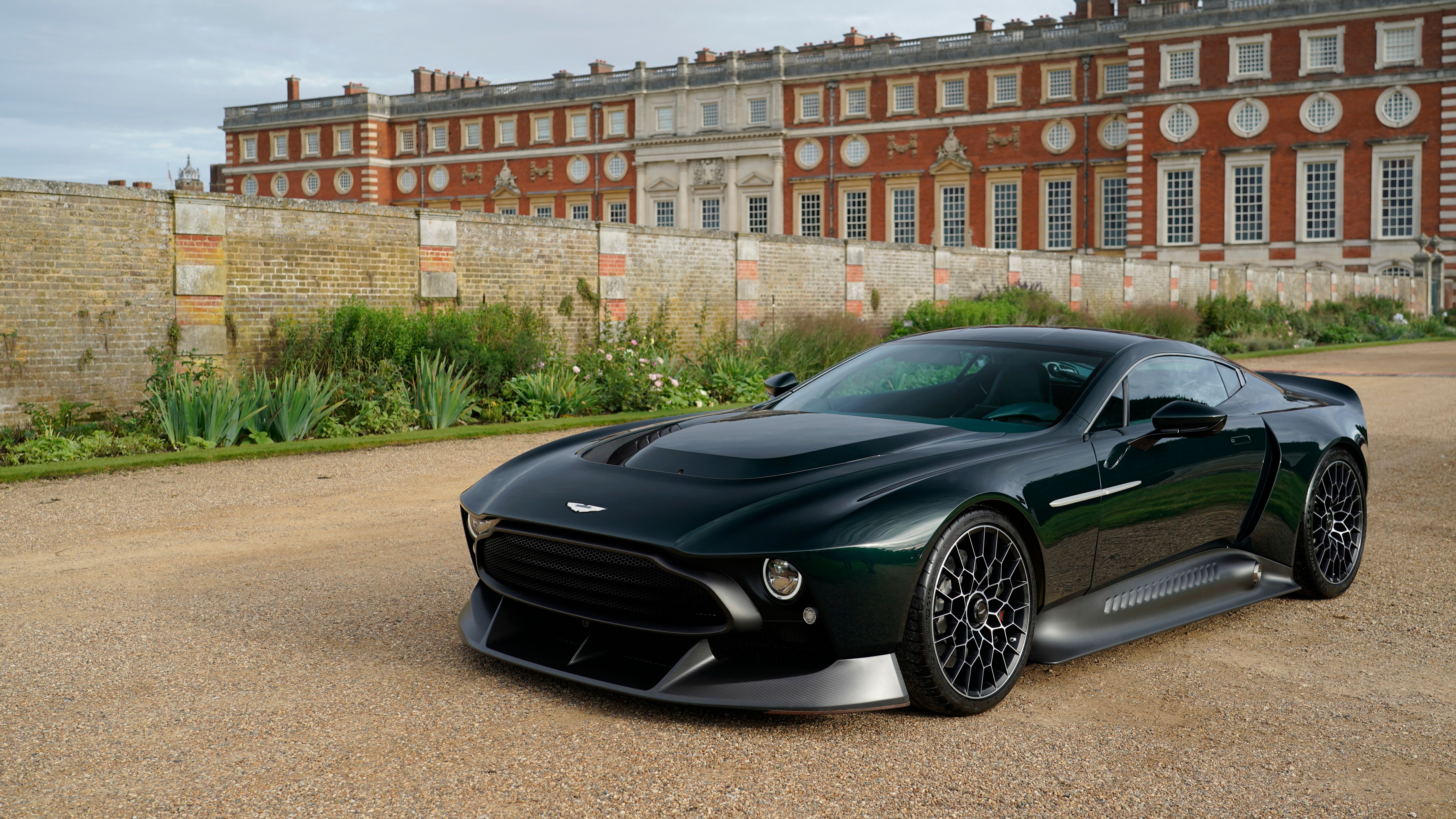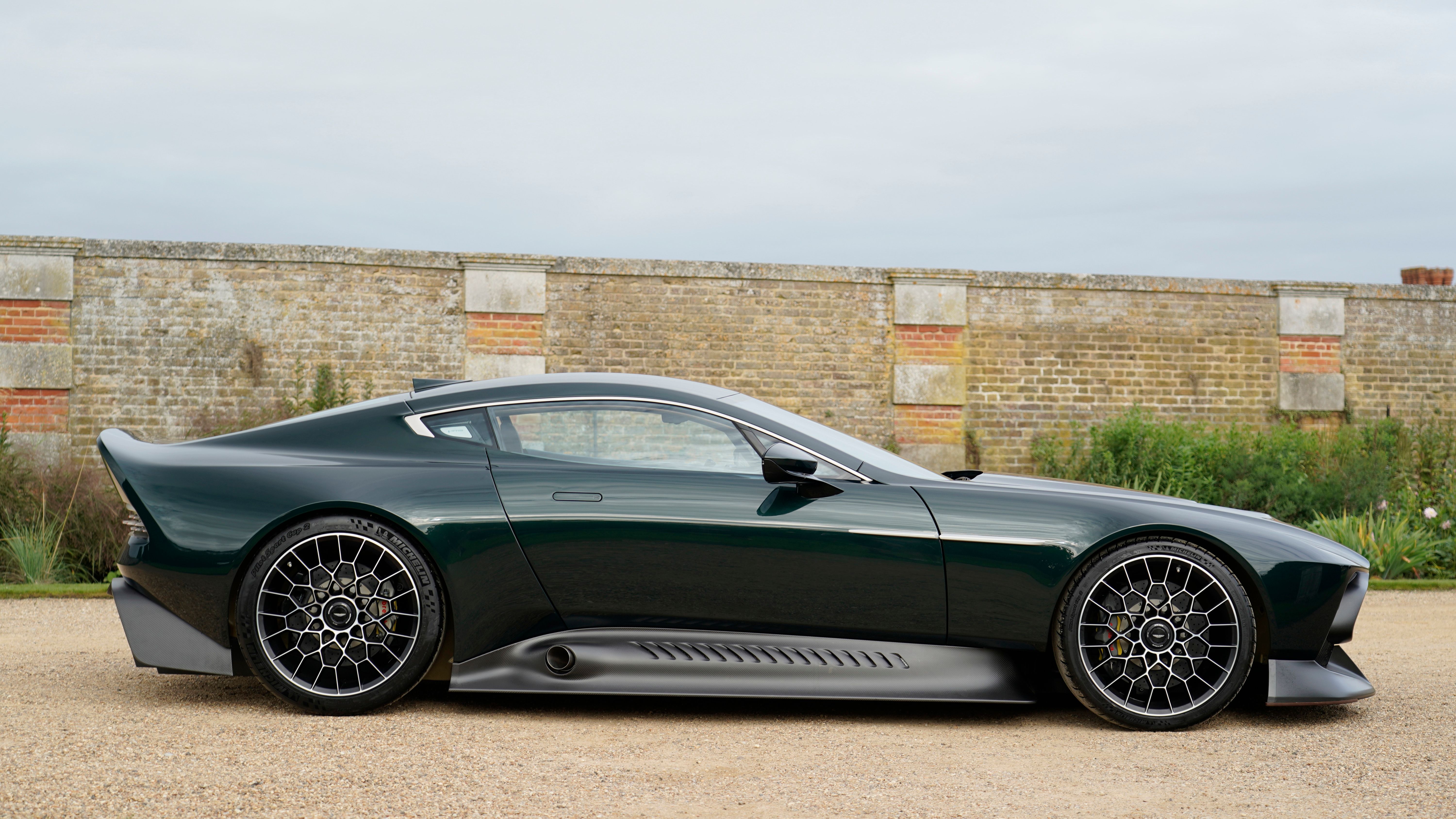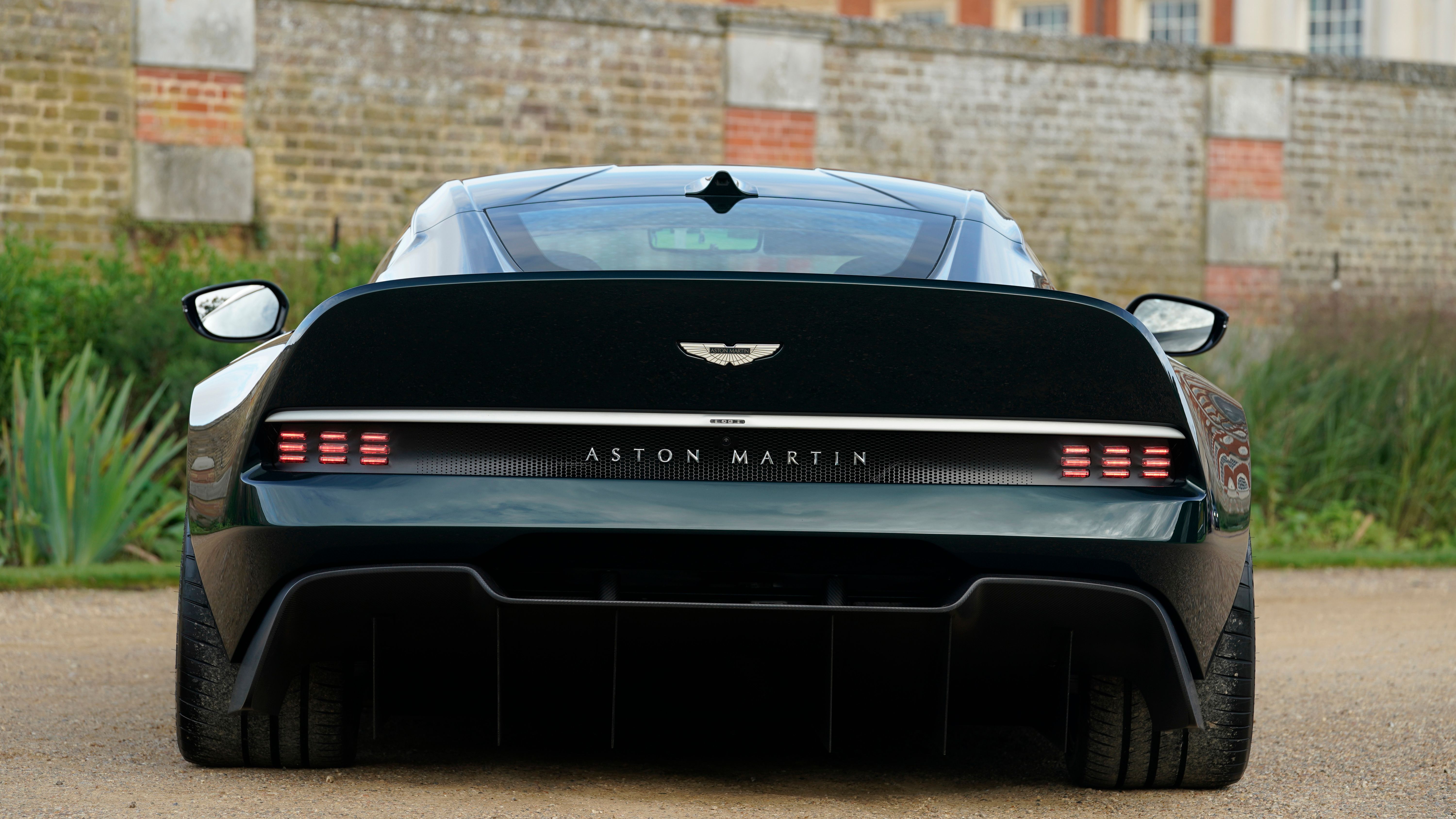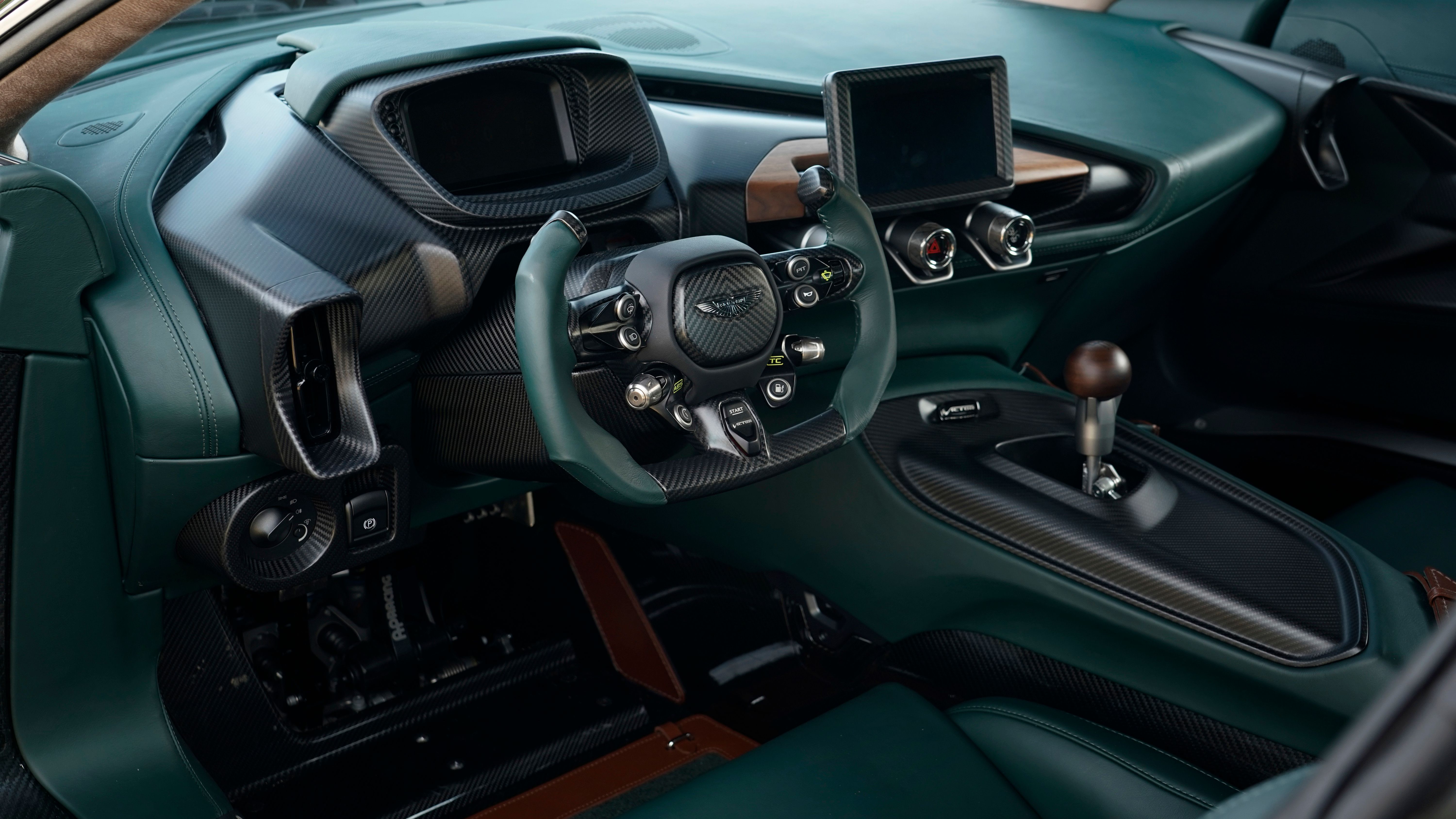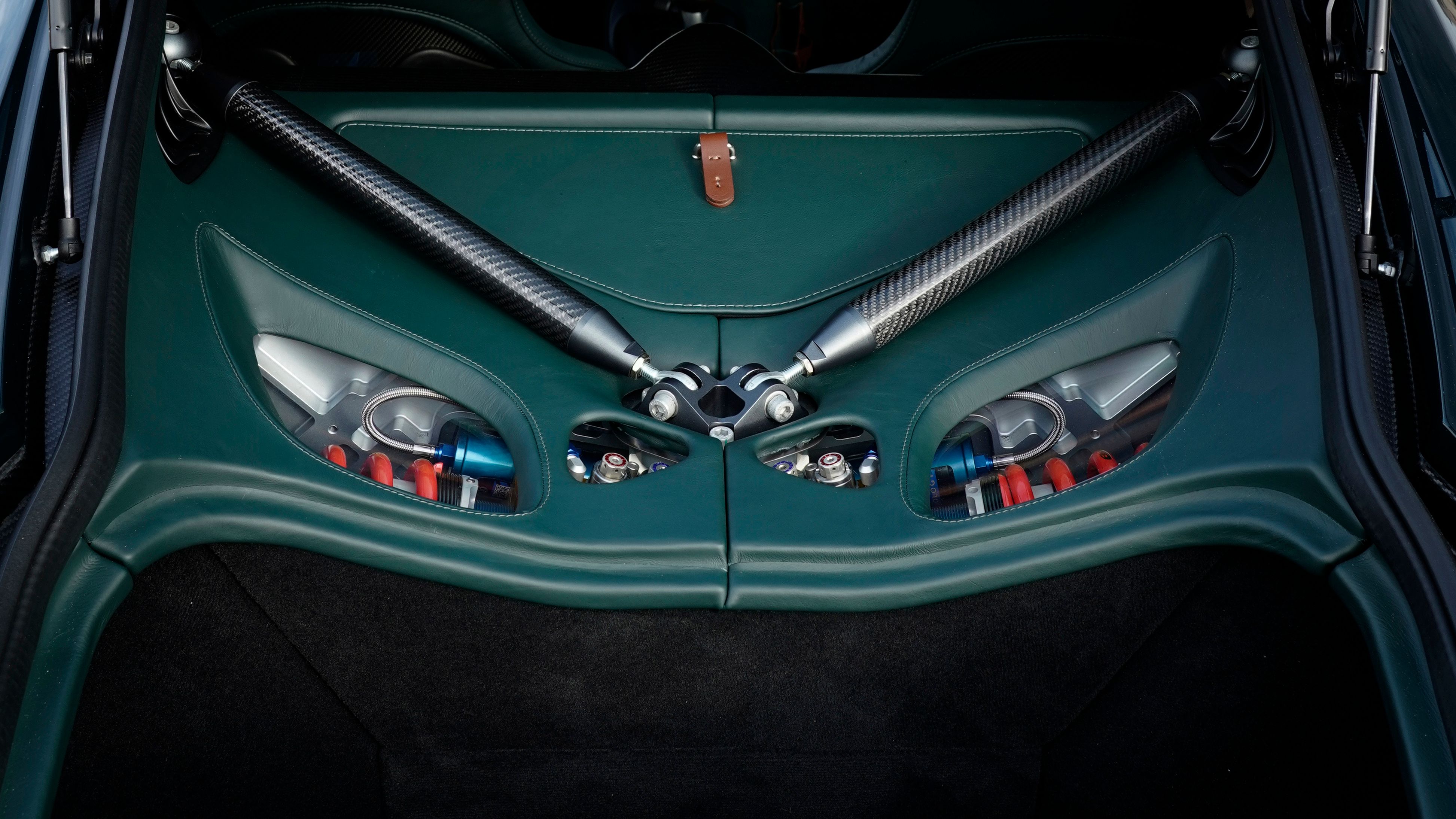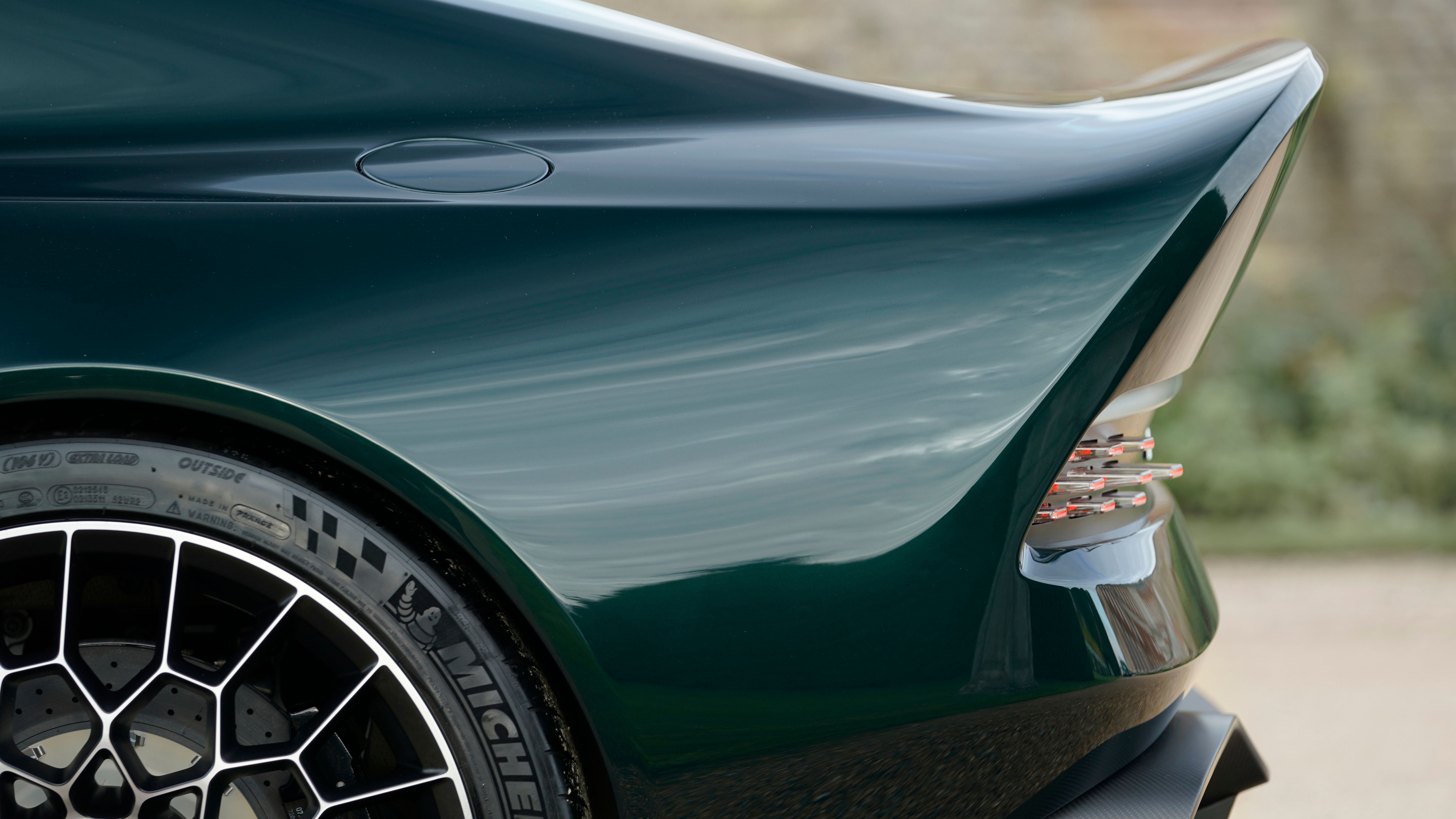Aston Martin has recently expanded beyond its usual three-vehicle lineup. It also offers an SUV now, a track-only supercar called the Vulcan, and two more performance cars, including the Valkyrie, are set to follow. Now, Aston Martin is flexing its Q division muscle with a unique supercar called the Victor. It's inspired by the V8 Vantage model of the 1970s and 1980s and the DBS V8 from the late 1970s, also known at the RHAM/1, developed for the 24 Hours of Le Mans. It combines technology from the Valkyrie, Vulcan, and One-77, and it looks really cool on the outside.
The Aston Martin Victor features a full carbon-fiber body
Design-wise, the Victor boasts the company's current styling language, but it's also heavily inspired by the old V8 Vantage. While the front grille is actually as modern as it gets, the dustpan style fender is based on the RHAM/1 race car, while the round headlamps are inspired by the V8 Vantage. The profile doesn't have that much in common with old Aston Martins, although the door and rear fenders are almost featureless for a clean look. But the heavily sculpted side skirts that integrate side-exiting exhaust pipes are yet another reference to the RHAM/1 race car.
The rear of Victor is incredibly simple for a modern supercar. Again based on late 1970s Aston Martin designs and the RAHM/1, it features a simple fascia with two small taillights mounted in a carbon-fiber "stripe." Above that, there's a plain surface that extends into a big spoiler. Below, there's just a massive, carbon-fiber diffuser. No exhaust pipes, no movable wings, no grilles, and no holes. Simple yet brilliant!
The Aston Martin Victor features a unique cabin with loads of carbon-fiber
Like any bespoke, one-off model, the Victor features a unique interior layout. It's obviously inspired by the world of motorsport, hence the carbon-fiber steering wheel from the Vulcan, the small display for an instrument cluster, and a large amount of carbon-fiber. The rest of the cockpit is draped in fine leather, finished in a shade of green that matches the exterior color. Aston Martin also used anodized aluminum and machined and polished titanium, as well as solid walnut wood trim on the dashboard. But even though it's as modern as it gets, it also boasts a vintage vibe that reminds me of old Aston Martin grand tourers.
The Aston Martin Victor is a naturally aspirated beast
While most modern supercars feature turbocharged engines, the Victor remains true to the classic V-12.
There's no word as to how quick the Victor is, but it should hit 60 mph in less than three seconds and hit a top speed of at least 200 mph.
All that power travels through a six-speed manual transmission from Graziano, while the clutch of the race-spec variety. The Victor is built on a refurbished carbon-fiber monocoque from the One-77 and provides a whopping 612 pound-feet of downforce at 100 mph, some 230 pound-feet more than the race-spec Aston Martin Vantage GT4.
The Victor rides on the same springs and dampers as the track-only Vulcan, while the big Brembo carbon-ceramic brakes deliver GT3 race car levels of stopping power.
The Aston Martin Victor is a car that you can't buy
Designed and built by the company bespoke Q division, the Aston Martin Victor is a one-off that won't be following by a production series. One lucky customer, who probably paid in excess of $2 million, will get to take it home, but Aston Martin won't build another one like it. But the Victor is proof that the British company is more than capable of building unique performance vehicles, just like Bugatti and Ferrari do.

